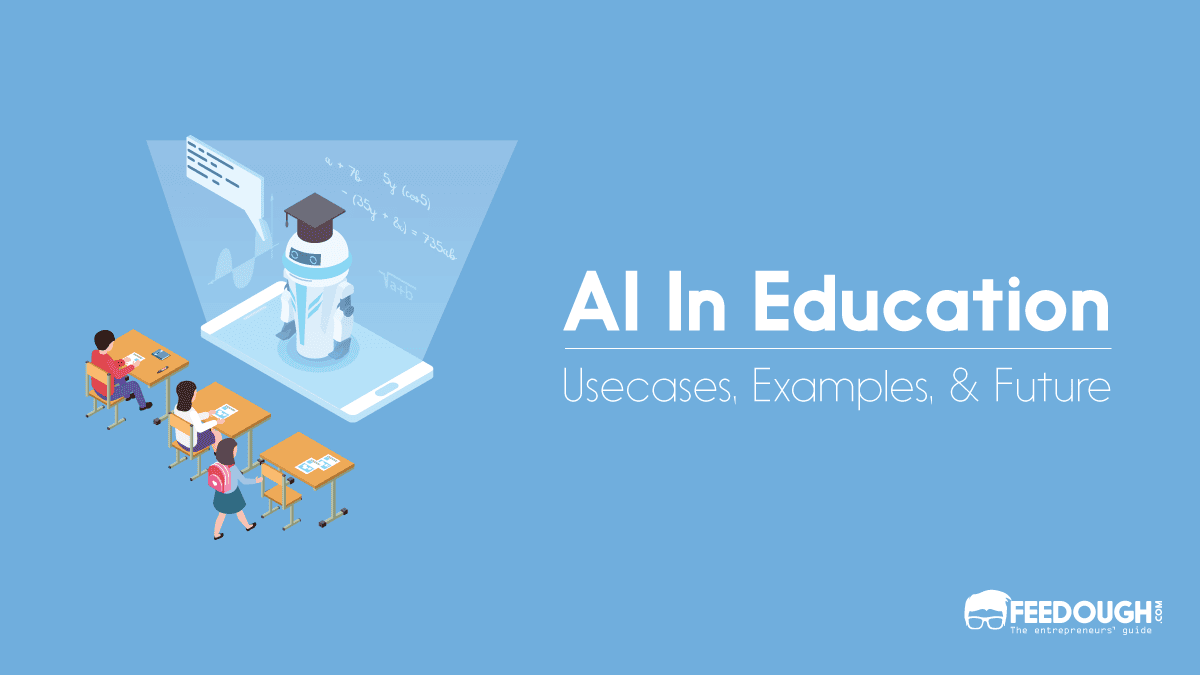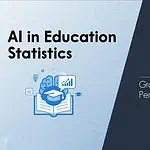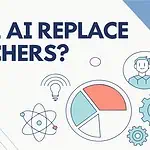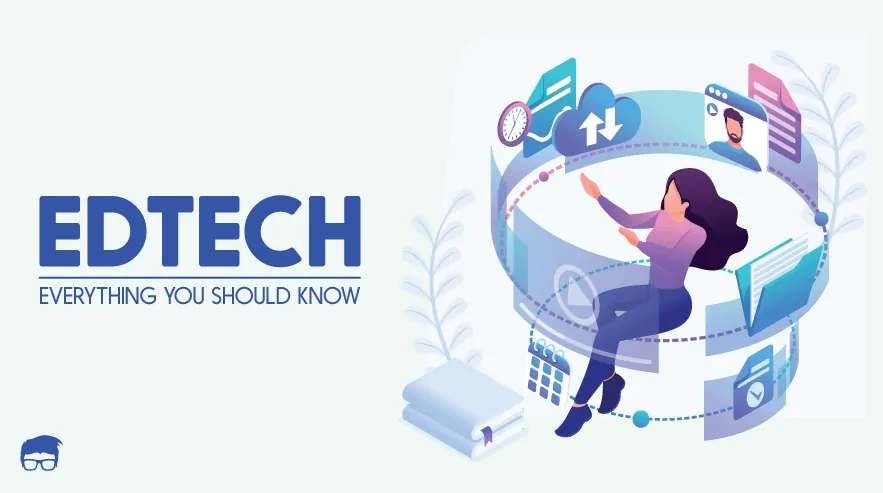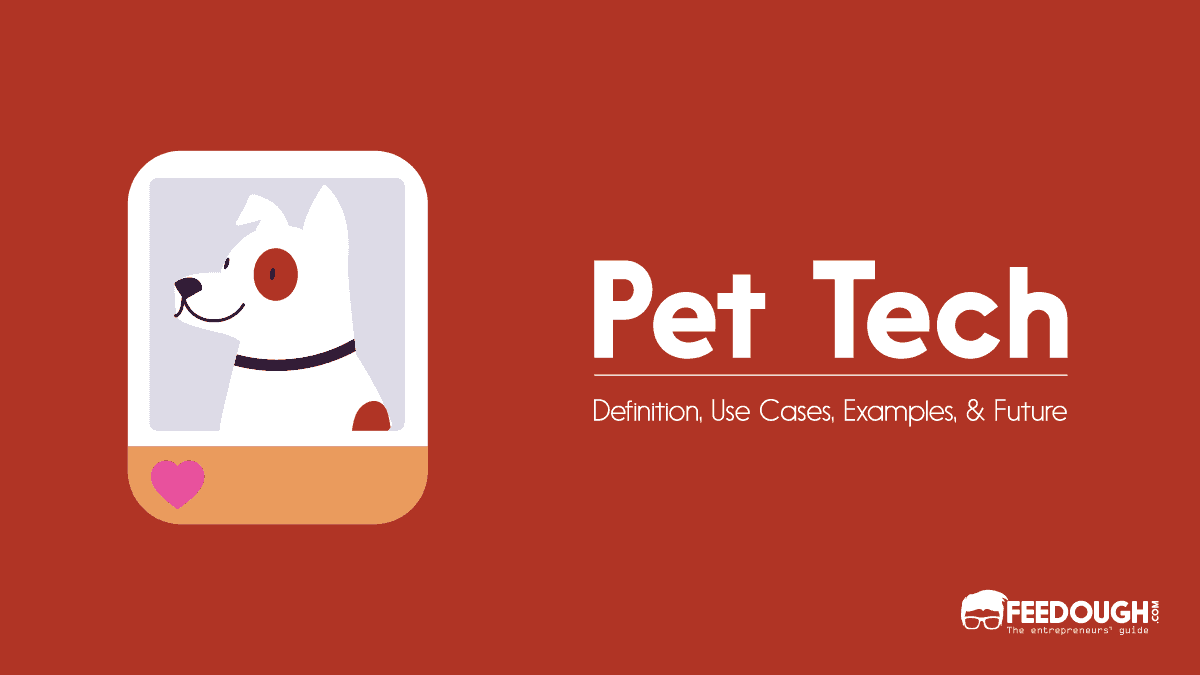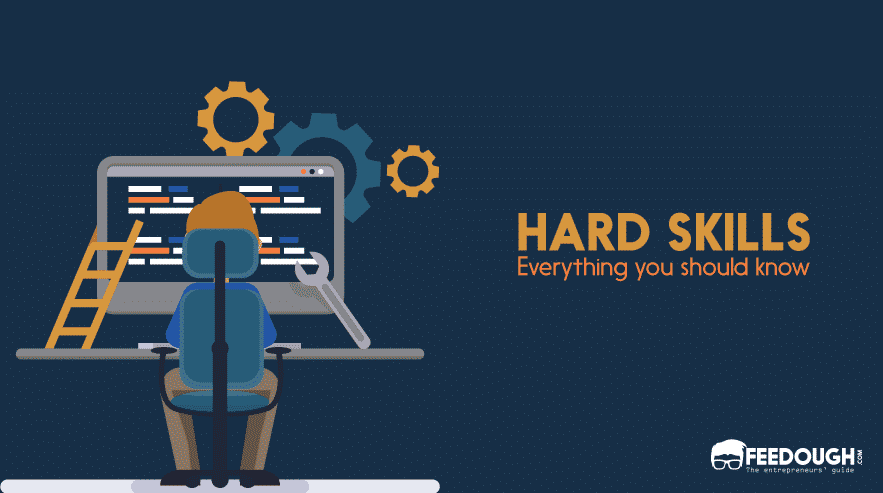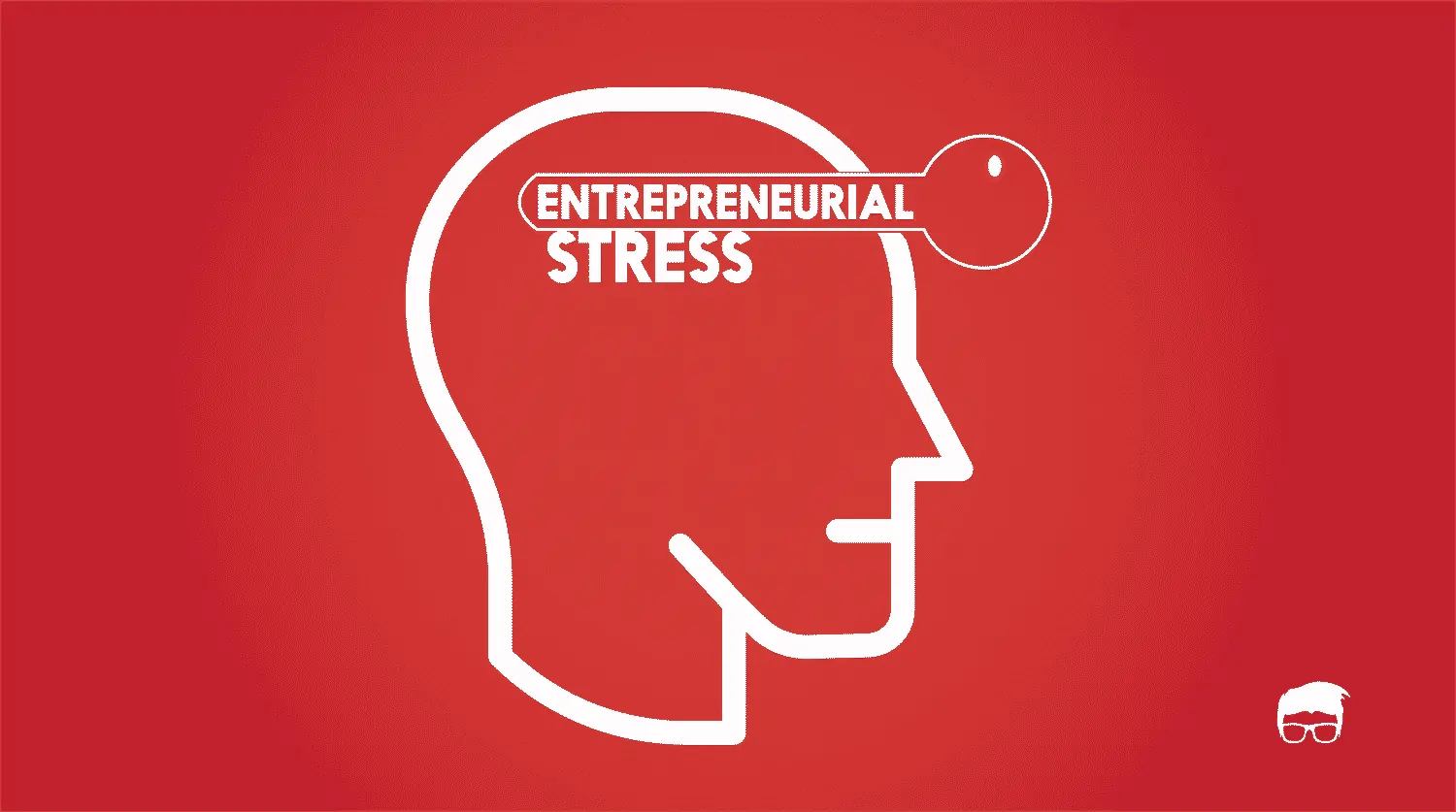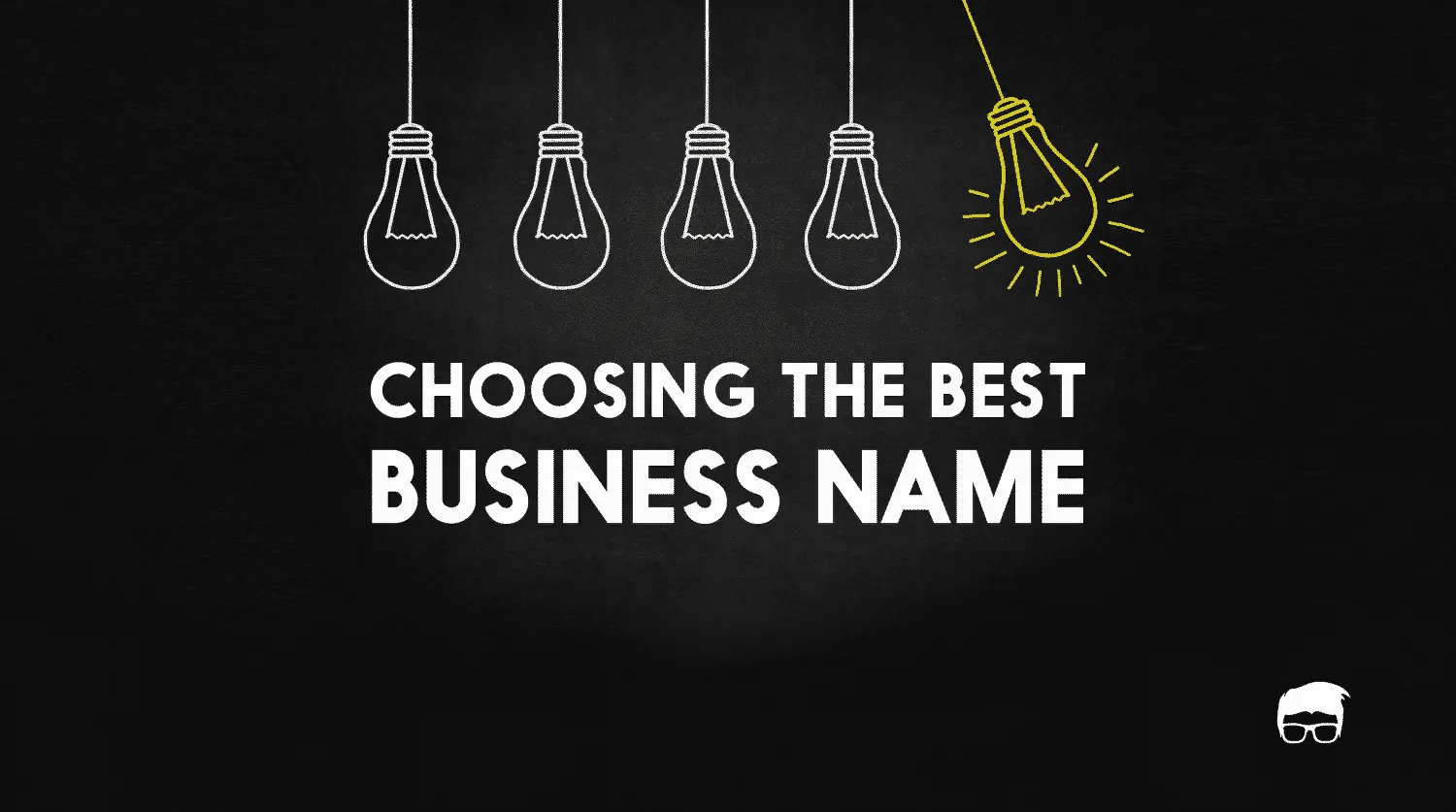Strangely, when we talk about AI, education isn’t the first thing that pops into our heads. It’s all about AI replacing jobs, self-driving cars, and robots taking over the world.
But let’s talk long term. What if these automated systems help us learn better, make us better decision-makers, and facilitate the education process for future generations?
But there’s also an important question: will AI ever replace teachers? Will it lead to auto-learn systems, eliminating the need for a physical classroom?
While there’s no one answer, there’s a lot to discuss regarding the past, present, and future of AI in education.
So here we go.
The Present State Of AI In Education
Ironically, like calculators, AI has a “cheating” reputation in education. And ironically, the place where AI should be used the most is where it’s not being used at all – assisting humans in learning.
But that doesn’t mean there aren’t any use cases for AI in education presently.
Around 50% of K-12 students use AI chatbots like ChatGPT at least once a week for their schoolwork. The number is even higher in universities, where around 86% of students use AI tools to assist with their studies.
Even teachers have started embracing the technology, with approx 50% using ChatGPT weekly to
- Generate lessons ideas
- Prepare instructional materials
- Personalise resources for different student needs
- Streamline administrative tasks
The problem?
- AI isn’t part of the curriculum of most schools yet (even though ChatGPT was among the top 10 websites visited in 2024).
- There isn’t even formal education for teachers to learn AI.
- No formal policies regulate the use of AI in classrooms, and more than 50% of teachers report that their schools lack such policies.
- Ethical concerns about using AI in education remain, such as data privacy and bias.
But when it comes to students, they’re smart and use chatbots and other AI tools regardless for –
- Personalised learnings: Tools like ChatGPT and NotebookLM help students collect, organise and interact with knowledge of their own – with not just text but also letting them converse with the system. Another creative example is students using Character.ai to talk to Einstein about his theory of relativity.
- Homework: There’s a grey line here. AI can help students complete assignments easily but may also encourage academic dishonesty. For example, if given a good prompt, ChatGPT can come up with an
- Productivity: Tools like Gamma.app, napkin.ai, generatestory.io, etc., help students increase their productivity by creating presentations, infographics, stories, essays, etc., in minutes.
For teachers and educators, AI usage is still an unregulated territory. But the possibilities include –
- Automated Grading: A fine-tuned GPT or any good AI model can help teachers grade assignments and test papers and give immediate feedback in real-time.
- Personalised teaching: AI tools like Knewton’s personalised learning content “learn” about each student’s strengths, weaknesses, and interests to tailor lessons. Several newcomers also use RAG-powered learning generators to assist teachers in creating customised learning materials for students based on their specific needs. Even the non-teaching-oriented tools help teachers automate their tasks. For example, AI chatbots like ChatGPT can actually do a simple task like designing a curriculum for computer science for kids better than most inexperienced teachers, given a good prompt.
The present debate – AI might hamper creativity, learning skills, and motivation. For example, brainstorming ideas that took hours and finding evidence can now be done in minutes with AI tools like ChatGPT, Claude, Gemini, etc.
Regarding learning, AI is the next calculator. While teachers could be against using it, it would be a part of our lives, changing it completely – from the way we think, work, socialise, and learn. But AI is still in its nascent stage here.
For schools and institutions, the time is now to incorporate AI not just into their curriculum and teacher training programs but also into operations, policy-making, and ethical considerations.
Case Study of AI Incorporation In the Education Industry
A notable case study of successful AI implementation in education comes from Ivy Tech Community College in Indiana. The college faced significant student retention and success challenges, particularly with students at risk of failing early in the semester due to non-academic obstacles.
To tackle this, the college implemented an AI-driven program focusing on early identification of at-risk students. The AI system analysed data from 10,000-course sections to identify students at risk of failing within the first two weeks of the semester. The program was designed to detect both academic and non-academic challenges that could hinder student progress.
The program achieved remarkable success in improving student outcomes:
- 98% of identified and contacted students improved their grades to at least a C.
- Three thousand students were prevented from failing their courses.
- The project has successfully assisted over 34,712 students and continues to grow.
How did it work?
The system collected and analysed multiple data points, including student attendance patterns, assignment completion rates, quiz and test scores, Learning management system (LMS) login frequency, time spent on course materials, and student engagement metrics in online discussions
Then, the AI platform used machine learning algorithms to:
- Process real-time student data within the first two weeks of classes
- Compare current student behaviour against historical success patterns
- Generate risk scores for individual students
And when the system identified a student at risk, it triggered a multi-step response:
- Faculty received automated notifications about specific students
- Academic advisors were alerted to reach out to struggling students
- Students received personalised communications about available support services
Future Applications Of AI In Education
All four parties (students, teachers, parents, and government) involved in the education sector have started to feel the pressure of AI-driven changes. Hence, we’re already seeing the development of new methods, technologies, and tools to address these challenges.
Hyper-Personalised Learning
Given that AI can collect and analyse data about student behaviour, preferences, and academic performance in real time, it has immense potential to create hyper-personalised learning experiences for students. For example, a student or a teacher can use fine-tuned AI to:
- Create tailored lesson plans and assignments based on the student’s strengths and weaknesses.
- Develop a hyper-personalised adaptive learning syllabus and adjust the difficulty level of content according to a student’s progress in real-time.
It’ll not only help teachers reduce their workloads, but each student will get individual attention, and their learning experience will continually evolve.
Even for teachers, AI will get into almost every process, from curriculum design, course scheduling to grading and feedback.
Intelligent Tutoring Systems
Intelligent Tutoring Systems (ITSs) are computer-based systems that use AI techniques to simulate a human tutor’s teaching behaviour. These systems can provide immediate personalised feedback on students’ work and progress, identify gaps in knowledge, and suggest appropriate learning activities.
Some popular examples of ITSs are Duolingo for language learning, Brainly for academic support, and Carnegie Learning for math education.
While, presently, ITSs’ scope is limited to teaching routine and standardised subjects, they are expected to advance further with the growth of AI.
For example, expect Duolingo to come up with a virtual agent that can talk or even teach a new language over a video call. Such an agent can also express emotions, making the learning experience more interactive and personal.
Improved Accessibility and Inclusion
AI will play a crucial role in making education more accessible and inclusive, especially for children with learning disabilities. With AI-powered tools like speech recognition and text-to-speech technology, students can now receive real-time feedback on their pronunciations while reading or speaking.
There’s a growth of tools that can help with –
- Visual assistance for people with visual impairments: Envision Glasses are a prime example of this technology. They integrate Google Glass hardware with AI capabilities, including ChatGPT, to offer features such as:
- Text recognition and reading
- Object identification
- Scene description
- Voice-activated commands
- Transcription tools for deaf students: Several AI-powered transcription tools, such as Ava and Google Live Transcribe, convert speech to text in real time. These tools can help deaf or hard-of-hearing students to follow lectures and discussions. Even OpenAI came up with Whisper, which can transcribe any conversation with 94% accuracy.
AI will also positively impact the education of students from low-income backgrounds. Let’s say a student who cannot afford thousands of dollars to learn a new skill might be able to get to learn it simply by using a chatbot platform with good prompting today. In future, they’re may be ‘learn anything’ platforms that use the sheer knowledge from the web to teach you anything. In fact, Google has already come up with one.
Enhanced Teacher Support
As a teacher, it is often really difficult (if not impossible) to tailor learning experiences for each student.
The future seems to hold good news in this regard, as AI will take care of many tasks that are currently done manually by teachers.
AI can help:
- Identify students’ individual strengths and needs.
- Create personalised lesson plans for each student.
- Free up time for teachers to focus on more creative or interactive activities in the classroom.
These tools can also automate routine tasks like grading homework, freeing up time for teachers to focus on more essential aspects of teaching, such as building relationships with students and facilitating critical thinking. This can lead to better instruction quality for the student.
Advanced Assessment and Analytics
Teachers almost always have a certain bias when evaluating students’ work. For example, let’s say a student is always late in submitting assignments. So, the teacher may subconsciously grade them more strictly than other students who submit on time.
AI tools like Gradescope, Socrative, etc., can eliminate this bias by providing objective and accurate assessments of students’ work based on pre-defined criteria.
Some custom AI tools may also assist teachers in identifying areas for improvement and provide real-time analytics that can be used to adjust lesson plans or teaching methods accordingly.
And it’s not just this, AI can even help teachers make sense of numbers, learning patterns and trends across student groups to make informed decisions.
AI Automated School Systems
From automated timetables to streamlined admissions, teacher training, and performance management, AI in schools is expected to automate many administrative tasks.
Schools can use AI-powered chatbots to respond to students’ or parents’ queries and send automatic reminders for assignments, tests or other important events.
They can also help schedule parent-teacher conferences by taking into account teacher’s availability and parents’ preferences. Additionally, these systems may also identify patterns of absenteeism among students and alert the school administration if necessary.
Moreover, using sentiment analysis on student feedback forms or surveys can help school administrations better understand how courses are being received by students. This data will further be used to improve the quality of education offered at the institution.
Ethical Considerations Of AI In Education
Any technological advancement comes with ethical considerations. Similarly, as AI becomes an integral part of education, it’s essential to address potential ethical challenges that might arise. These include:
- Data privacy concerns: With AI collecting and processing vast amounts of data, there is a risk of privacy breaches. Schools need to ensure that proper measures are taken to protect students’ personal information.
- Reduction of creative thinking: There’s a risk that AI tools may replace the need for students to think critically and creatively, leading to a decline in essential skills. While this notion is still debated, it’ll be similar to using calculators for math problems. Students must continue to learn and practice these skills actively.
- Digital divide: Implementation of AI-powered tools may further widen the gap between students from high-income families versus those from low-income backgrounds who may not have access to such technology. Schools must ensure that all students have equal opportunities for learning and growth.
- Bias in AI algorithms: As machines learn from existing data, there is a possibility of having biased algorithms that can adversely affect student outcomes. Schools should ensure that these systems undergo regular checks and have appropriate mitigation strategies in place.
- Over-reliance on technology: While AI can enhance learning experiences, it should not be seen as a complete substitute for teachers. It’s crucial to find the right balance between human interaction and technology.
A startup consultant, digital marketer, traveller, and philomath. Aashish has worked with over 20 startups and successfully helped them ideate, raise money, and succeed. When not working, he can be found hiking, camping, and stargazing.
